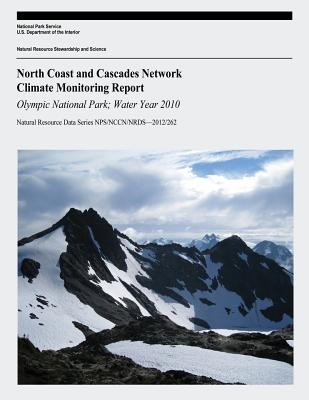
- We will send in 10–14 business days.
- Author: National Park Service
- Publisher: CreateSpace Independent Publishing Platform
- Year: 2017
- Pages: 82
- ISBN-10: 1548896500
- ISBN-13: 9781548896508
- Format: 21.6 x 28 x 0.4 cm, softcover
- Language: English
- SAVE -10% with code: EXTRA
North Coast and Cascades Network Climate Monitoring Report (e-book) (used book) | bookbook.eu
Reviews
Description
Climate and weather events define the ecological characteristics found in national parks and are key to understanding and interpreting changes in natural resources. Everyday park operations including; fire management, search and rescue, maintenance of park infrastructure, and visitor use are influenced by weather. Collecting weather data and maintaining climate records provides essential information needed to support park operations and to monitor park resources. This report summarizes climate data collected in Olympic National Park during the 2010 water year, and is part of a set of climate summary reports from seven national and historic parks in the North Coast and Cascades Network. Published in the National Park Service's Natural Resource Data Series, annual climate summary reports are intended to provide basic data sets and data summaries in a timely manner, with minimal interpretation and analyses. We intend that the primary audience for this document will be National Park staff, especially decision makers, planners, and interpreters; partners; and interested public. Temperature and precipitation data are presented from 11 weather stations ranging in location from the coast to high elevation sites in the mountainous core of the Olympics. Data were recorded using automated instruments operated by the National Park Service and other collaborators, including the National Weather Service and the Natural Resources Conservation Service. For two stations with long term records, the Quillayute Airport representing wet, west side conditions and the Elwha Ranger Station representing the drier, northern portions of the park, monthly average temperatures and monthly total precipitation are reported and compared to the 30-year normal (1971 to 2000). Monthly snow depth and snow water equivalent (SWE) are reported for two Snow Telemetry (SNOTEL) stations and three snow courses within the park. Daily and monthly air temperature, precipitation and snowpack for the nine park operated weather stations are presented in individual appendices. Each appendix includes comparisons to the period of record, which varies by station. Highlights of important weather events and maintenance issues from each site are also noted. Weather data collected in water year 2010 indicated that this year was generally cooler and wetter than normal. Of particular interest was a mid-season shift in weather, resulting in an unusually cold and wet spring and summer which contributed to delayed phenology and a prolonged mountain snowpack.
- Author: National Park Service
- Publisher: CreateSpace Independent Publishing Platform
- Year: 2017
- Pages: 82
- ISBN-10: 1548896500
- ISBN-13: 9781548896508
- Format: 21.6 x 28 x 0.4 cm, softcover
- Language: English English
Climate and weather events define the ecological characteristics found in national parks and are key to understanding and interpreting changes in natural resources. Everyday park operations including; fire management, search and rescue, maintenance of park infrastructure, and visitor use are influenced by weather. Collecting weather data and maintaining climate records provides essential information needed to support park operations and to monitor park resources. This report summarizes climate data collected in Olympic National Park during the 2010 water year, and is part of a set of climate summary reports from seven national and historic parks in the North Coast and Cascades Network. Published in the National Park Service's Natural Resource Data Series, annual climate summary reports are intended to provide basic data sets and data summaries in a timely manner, with minimal interpretation and analyses. We intend that the primary audience for this document will be National Park staff, especially decision makers, planners, and interpreters; partners; and interested public. Temperature and precipitation data are presented from 11 weather stations ranging in location from the coast to high elevation sites in the mountainous core of the Olympics. Data were recorded using automated instruments operated by the National Park Service and other collaborators, including the National Weather Service and the Natural Resources Conservation Service. For two stations with long term records, the Quillayute Airport representing wet, west side conditions and the Elwha Ranger Station representing the drier, northern portions of the park, monthly average temperatures and monthly total precipitation are reported and compared to the 30-year normal (1971 to 2000). Monthly snow depth and snow water equivalent (SWE) are reported for two Snow Telemetry (SNOTEL) stations and three snow courses within the park. Daily and monthly air temperature, precipitation and snowpack for the nine park operated weather stations are presented in individual appendices. Each appendix includes comparisons to the period of record, which varies by station. Highlights of important weather events and maintenance issues from each site are also noted. Weather data collected in water year 2010 indicated that this year was generally cooler and wetter than normal. Of particular interest was a mid-season shift in weather, resulting in an unusually cold and wet spring and summer which contributed to delayed phenology and a prolonged mountain snowpack.


Reviews